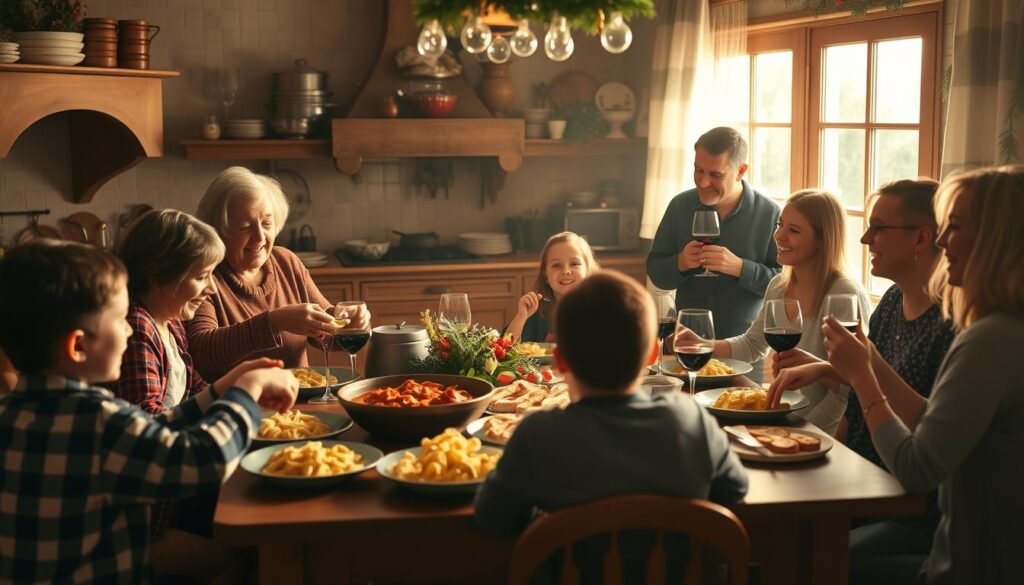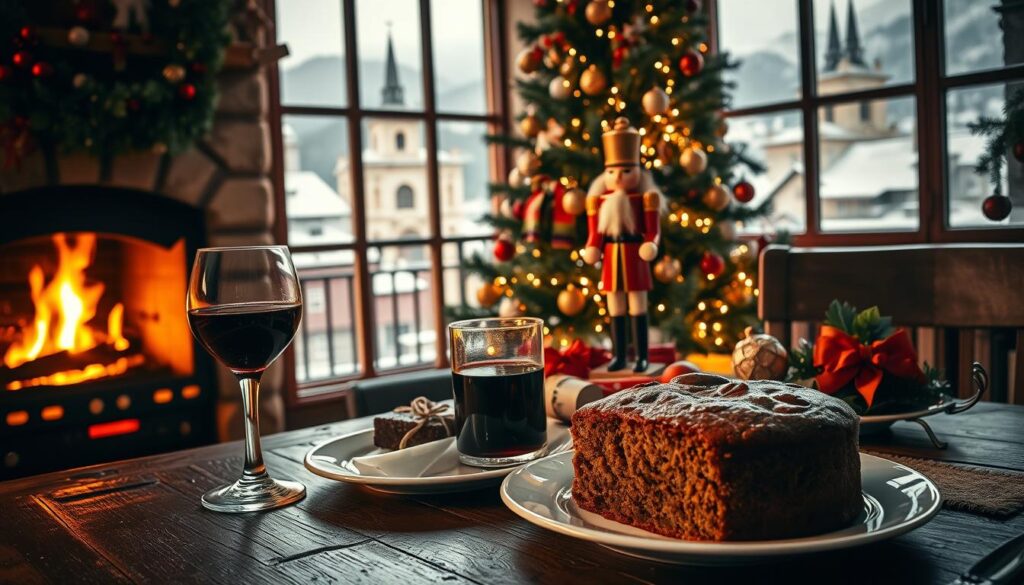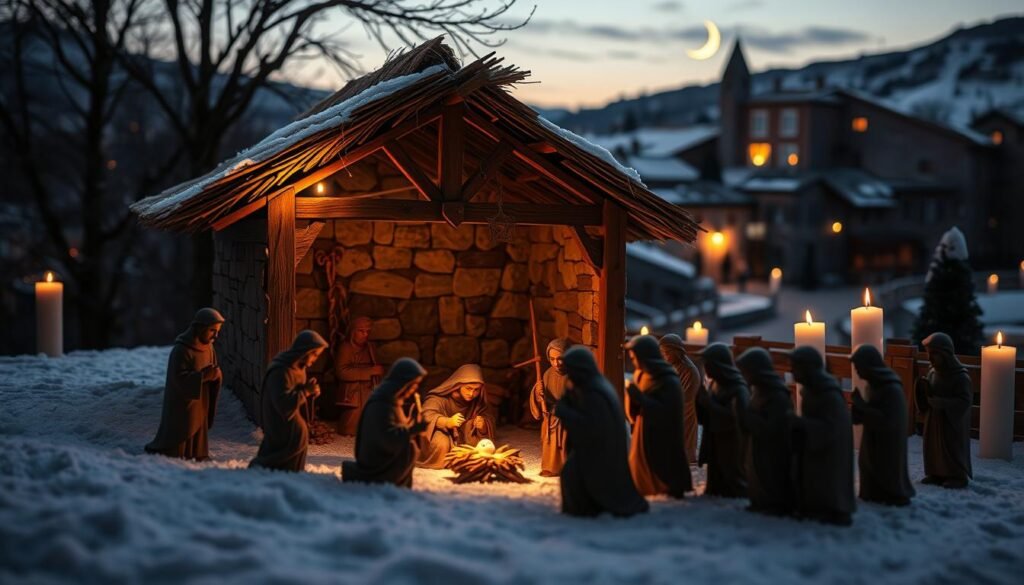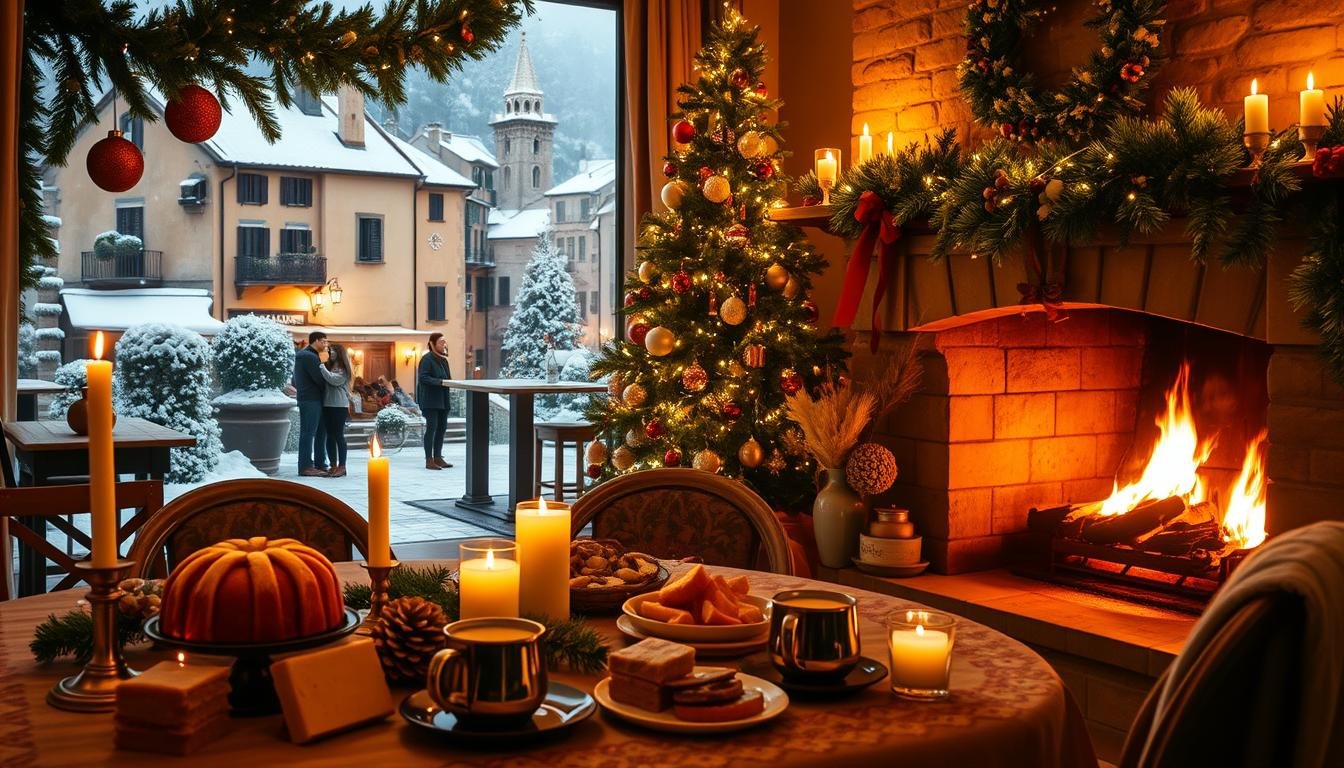Explore the Traditions of an Italian Christmas
How do Italians make the holiday season so special? For many, the answer lies in the rich traditions and warm atmosphere that define an Italian Christmas.
In Italian culture, the holiday season is a time filled with family gatherings, traditional foods, and regional customs passed down through generations. As you explore the traditions of an Italian Christmas, you’ll discover how this special time of year brings people together.
From the holiday feasts to the exchange of gifts, Italian Christmas celebrations are a unique blend of religious significance and festive cheer. Whether you’re planning a trip to Italy or simply want to incorporate some Italian traditions into your own family celebrations, understanding the cultural context of this special season is key.
The Heart of an Italian Christmas Celebration
In Italy, Christmas is a celebration that revolves around the family unit. The Italian saying “Natale con i tuoi, Pasqua con chi vuoi” (Christmas with your family, Easter with whomever you want) emphasizes the central role of family during the Christmas season.

Italian Christmas celebrations are characterized by extended family gatherings, where multiple generations come together to share meals, traditions, and time. These gatherings are a cornerstone of Italian Christmas celebrations, strengthening family bonds through shared responsibilities in preparing meals, decorating homes, and participating in religious observances.
Key Dates in the Italian Christmas Season
The Italian Christmas season is filled with significant dates. It begins with the Feast of the Immaculate Conception on December 8th and continues through to January 6th, Epiphany. Christmas Eve, known as La Vigilia, is a particularly important night for family gatherings and traditional meals.
The Importance of Family During Italian Holidays
During Italian holidays, family is at the forefront. The multi-generational aspect of Italian Christmas gatherings ensures that traditions are passed down from older to younger family members, preserving cultural heritage. These celebrations often extend to close friends and loved ones, creating a warm, inclusive atmosphere. For many people, it’s a time to reconnect with their roots and strengthen bonds.
Essential Italian Christmas Greetings
As you immerse yourself in the Italian Christmas spirit, learning the essential greetings will make your holiday season more authentic. Italian Christmas traditions are known for their warmth and hospitality, and using the right greetings can make a big difference in your interactions.
How to Say “Merry Christmas” in Italian
In Italian, “Merry Christmas” is translated as “Buon Natale.” This is a crucial phrase to know when interacting with Italians during the holiday season. You can also use “Buon Natale” onChristmas cardsto wish your friends and family amerry Christmas. For a more festive touch, you might include a few moreChristmas Italianphrases, such as “Auguri di Natale” (Christmas wishes) or “Felice Natale” (Happy Christmas).

New Year’s Wishes and Holiday Phrases
While “Buon Natale” is used to wish someone a Merry Christmas, as the holiday season progresses into the New Year, Italians use “Buon Anno” to wish someone a Happy New Year. You can also say “Auguri di Buon Anno” for more formal or written wishes. Combining both Christmas and New Year’s greetings, you might say “Buon Natale e Buon Anno” to cover the entire holiday period.
Responding to Italian Christmas Greetings
When someone wishes you “Buon Natale,” you can respond with “Grazie, anche a te!” (Thank you, same to you! – informal) or “Grazie, anche a lei!” (Thank you, same to you! – formal). You can also elaborate your response by saying “Grazie, buon Natale anche a te/lei!” (Thank you, Merry Christmas to you too!). Knowing how to properly respond to Italian Christmas greetings demonstrates cultural awareness and completes the social exchange in an authentic way. This is especially important if you’re spending theChristmas happyseason in Italy or interacting with Italian speakers during the holidays.
By using these essential Italian Christmas greetings and responses, you’ll be able to navigate the holiday season with confidence and warmth, making your interactions more meaningful and enjoyable.
Traditional Italian Christmas Customs
The Italian Christmas season is a period of cherished customs, from Christmas Eve feasts to elaborate nativity scenes. These traditions are deeply rooted in Italian culture and are observed with great fervor across the country.
Christmas Eve Celebrations and La Vigilia
Christmas Eve, known as La Vigilia di Natale, is a significant part of Italian Christmas celebrations. It is traditionally a day of feasting, with families gathering for a meal that often includes seven types of fish, adhering to the Catholic tradition of abstaining from meat. This feast is a time for family bonding and is considered a highlight of the Christmas season.
The evening is also marked by attending midnight mass, known as La Messa di Mezzanotte, a cherished tradition that brings communities together.
Christmas Day and Santo Stefano Traditions
Christmas Day, or Natale, is a day filled with joy and gift-giving, particularly for children. The tradition continues on December 26th with Santo Stefano, a day that is also a public holiday in Italy. It’s a time for extended family gatherings and outings, often involving visits to relatives or enjoying the outdoors.
On both days, food plays a central role, with traditional dishes being prepared and shared among family and friends.
Also Read Best Christmas Gift Ideas for Mom in 2025
Also Read Best Christmas Gifts for Dad in 2025
Creating an Italian Presepio (Nativity Scene)
A quintessential Italian Christmas tradition is the creation of the presepio, or nativity scene. In many Italian households, the presepio is more significant than the christmas tree, especially in the southern regions. The art of crafting these scenes is highly revered, with Naples being a hub for exquisite handcrafted presepi.
Creating a presepio is often a family affair, with scenes being passed down through generations and expanded upon. These nativity scenes typically include detailed village settings with local characters and landscapes, reflecting the regional identity.

To incorporate this meaningful tradition into your holiday decorations, consider learning about the art of creating an authentic Italian presepio. You can start by selecting figurines and setting up a scene that reflects your connection to Italian culture or your personal interpretation of the nativity story.
The Legend of La Befana: Christmas in Italian Folklore
Beyond the traditional Christmas celebrations, Italian folklore introduces La Befana, a figure who embodies the spirit of gift-giving during the holiday time. As you explore the Italian Christmas traditions, you’ll discover that La Befana is an integral part of the festive season, especially around the Epiphany.

The Story Behind Italy’s Christmas Witch
La Befana is often described as a kind witch who sweeps away the old to make room for the new. According to legend, she was asked by the Three Kings to join them on their journey to find the baby Jesus, but she declined, saying she was too busy cleaning. Later, she regretted her decision and set out to find Jesus, leaving gifts for children along the way. On Epiphany (January 6), children wake up to find their stockings filled with gifts and candy if they’ve been good, or “coal” (sweet black candy) if they’ve been naughty.
Celebrating Epiphany the Italian Way
Celebrating Epiphany the Italian way means embracing a rich cultural heritage that revolves around family and friends. The night before Epiphany, children hang their stockings by the fireplace or window, eagerly awaiting La Befana’s visit. The day is also marked by special meals with traditional foods that vary by region, bringing people together for one final holiday feast. In many Italian communities, Epiphany is celebrated with parades, live nativity scenes, and special church services, commemorating the arrival of the Three Kings in Bethlehem.
By understanding and celebrating Epiphany the Italian way, you can extend your holiday celebrations and incorporate authentic Italian traditions into your family customs, making the festive season even more special.
Bringing Italian Christmas Traditions Into Your Home
The warmth and spirit of an Italian Christmas can be brought into your home through simple yet meaningful traditions. Italian Christmas celebrations are known for their emphasis on family, food, and festive customs, which can enrich your holiday experience.
One way to start is by incorporating Italian holiday phrases into your Christmas cards and conversations. Saying “Buon Natale” (Merry Christmas) or “Buone Feste” (Happy Holidays) can share the warm spirit of an Italian Christmas with friends and family. You can also wish someone a “Merry Christmas” in Italian by saying “Buon Natale,” making your holiday greetings more special.
Preparing traditional Italian Christmas dishes is another way to bring the holiday spirit into your home. Creating an Italian-inspired Christmas Eve dinner featuring seafood dishes offers a meaningful way to experience La Vigilia traditions. You can also prepare traditional Italian Christmas sweets like panettone or pandoro, adding authentic flavors to your holiday table.
Crafting a presepio (nativity scene) as a family activity provides both a decorative element and an opportunity to learn about this central Italian Christmas tradition. Extending your holiday celebrations through January 6th with an Epiphany observance and La Befana traditions gives children an additional day of wonder and everyone a chance to prolong the festive season.
Adopting the Italian focus on family gatherings and shared meals rather than elaborate gift-giving can help shift your holiday emphasis toward meaningful connections and experiences. By incorporating these Italian Christmas traditions, you can create a more festive and meaningful holiday season for yourself and your loved ones.
These adaptations don’t require Italian heritage—they’re accessible ways for anyone to incorporate the warmth, flavor, and spirit of an Italian Christmas into their own holiday celebrations. So, wish your friends and family a “Merry Christmas” and make this holiday season one to remember.
Also Read Best Christmas Gifts for Husband in 2025
Also Read Best Christmas Gifts for Your Wife in 2025







